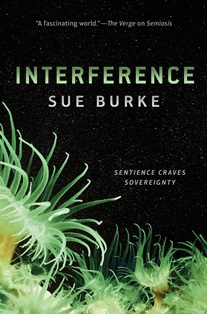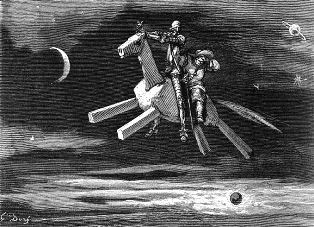Sue Burke's Blog, page 37
March 28, 2019
A first look at “Interference”
 Here’s the cover for Interference, the sequel to Semiosis.
Here’s the cover for Interference, the sequel to Semiosis.
The Verge interviewed me about the book:
“In Interference, Burke picks up the story a century after the end of Semiosis as a new expedition from Earth arrives on the planet, which threatens to upset the balance between Stevland, the Glassmakers, and humanity. The novel is out on October 22nd, and The Verge spoke with Burke about the novel, colonization, and why you should be nice to your house plants….”
March 27, 2019
My new view
[image error]
As I said earlier this month, my husband and I were moving. We stayed in the same neighborhood in Chicago, we just relocated to a nicer apartment. Here’s the view from my new home office at two different times in the morning. I’ve been here less than a week, and so far I love it. You can probably guess why.
[image error]
My new view
— Sue Burke


March 19, 2019
I’ll be at C2E2
 On Saturday, March 23, I’ll be at C2E2, the Chicago Comic and Entertainment Expo, at the McCormick Place. It’s famous for its huge “Artist’s Alley” where you can meet famous and up-and-coming comic book artists, for its amazing cosplay — and there’s plenty more to do involving games, anime, and family fun. It really is a good time.
On Saturday, March 23, I’ll be at C2E2, the Chicago Comic and Entertainment Expo, at the McCormick Place. It’s famous for its huge “Artist’s Alley” where you can meet famous and up-and-coming comic book artists, for its amazing cosplay — and there’s plenty more to do involving games, anime, and family fun. It really is a good time.I’ll be on a couple of panels as a literary guest.
The Future Is Now
Science fiction and fantasy authors discuss their predictions of near-future SF: what has come true, and what might be coming to pass? What will Chicago look like 50 years or more from now? Featuring: Sue Burke, Cory Doctorow, Mary Robinette Kowal, and Alison Wilgus.
12:30 p.m. to 1:30 p.m.: Panel in Room S405a
1:45 p.m. to 2:45 p.m.: Autographing at Tables 41 and 42
Magic and Mayhem in Science Fiction and Fantasy
How do fantasy and science fiction overlap and inform one another, and what constitutes magic and mayhem in both genres? How are authors breaking traditional rules of the genres and finding new ways to explore other worlds, or putting some extra magic in our own world? Featuring: Cory Doctorow, Mary Robinette Kowal, Alison Wilgus, Mirah Bolender, Sue Burke, and S. A. Chakraborty.
3:00 p.m. to 4:00 p.m.: Panel in Room S405a
4:15 p.m. to 5:15 p.m.: Autographing at Tables 41 and 42
March 13, 2019
The secret to decluttering your house in just one word
 That one-word secret to decluttering: move.
That one-word secret to decluttering: move.You pick up a possession, hold it in your hands, then stuff it into a box. Or chuck it.
That’s what I’m doing. My husband and I aren’t moving far, only four blocks away into a different apartment here in Chicago. It’s bigger and has a nicer view; our current apartment is crammed between two other buildings and a train embankment.
This won’t be an especially complicated move. Some of you may recall that in summer of 2016, we moved from Madrid, Spain, to Chicago, Illinois. That was complicated.
In Illinois, you pay your movers by the hour of labor. In overseas moves, you pay by the bulk and weight of the shipment, and that price was about ten times what this upcoming move will cost. As you can imagine, the transatlantic move inspired extreme decluttering. We haven’t accumulated much since, so very little will be chucked or given away this time, and the process will be simple: shovel everything into boxes, and then, in the new place, dump the boxes out. This includes about a thousand books (not counting e-books). They’re our dearest possessions.
If you don’t hear a lot from me during March, that’s because I’m elbow-deep in cardboard boxes. I expect everything to go well and, in the end, I’m sure it will spark joy.
— Sue Burke
March 6, 2019
Kitschies nomination for “Semiosis”
 Semiosis has been nominated for the Kitschies Golden Tentacle Award. I am honored — and awed by the other nominees. Perhaps it will impress the judges that the cover art of my book features genuine tentacles.
Semiosis has been nominated for the Kitschies Golden Tentacle Award. I am honored — and awed by the other nominees. Perhaps it will impress the judges that the cover art of my book features genuine tentacles.The Kitschies, a British award, describes itself as a way to reward “the year’s most progressive, intelligent and entertaining fiction that contain elements of the speculative or fantastic.” The Golden Tentacle Award is for debut authors, and the full list of nominees are:
Children Of Blood and Bone by Tomi Adeyemi (Pan MacMillan)
Frankenstein In Baghdad by Ahmed Saadawi (Oneworld)
Semiosis by Sue Burke (Harper Voyager)
Sweet Fruit, Sour Land by Rebecca Ley (Sandstone Press)
The Poppy Way by R.F. Kuang (Harper Voyager)
Other Kitschies award categories are Red Tentacle for the best novel, Inky Tentacle for the best cover art, Invisible Tentacle for the best natively digital fiction, and Black Tentacle awarded at the judges' discretion.
The winners will be announced at an awards ceremony in London on April 15.
February 27, 2019
Don Quixote vs. science fiction
 Don Quixote de la Mancha, by Miguel de Cervantes, changed the way Spain thought about itself. It also made Spain reject any sort of non-realism in fiction, such as science fiction and fantasy, for centuries to come.
Don Quixote de la Mancha, by Miguel de Cervantes, changed the way Spain thought about itself. It also made Spain reject any sort of non-realism in fiction, such as science fiction and fantasy, for centuries to come.Published in 1605, the novel Don Quixote tells the story of a poor, elderly nobleman driven mad by the fantasy novels of his day, which depicted brave knights and their dazzling deeds. The nobleman adopts the name Don Quixote and sets off on quests. In chapter VIII he famously mistakes windmills for terrible giants and attacks them. In chapter XLI, he is tricked into believing that an enchanted wooden horse has the power to carry him and his squire Sancho Panza through the sky.
Cervantes’s novel appeared when Spain was in a period of desengaño or “disillusionment” after imperial losses, government bankruptcy, a deadly plague, failed harvests, economic disaster, and the defeat of the Invincible Armada. The nation had attempted to fulfill grand ambitions only to discover that it had been tilting at windmills. The novels that Cervantes’s fictional character read were real books that had, a generation earlier, inspired the conquistadors in their exploits: the state of California is named after an imaginary caliphate in one of those books, The Exploits of Espandian, which was the sequel to Amadis of Gaul . Ambition was not enough, though, and eventually fantasy gave way to sad reality.
Don Quixote changed the way Spain thought about itself — and about literature.
“The problem with Spanish science fiction starts with Quixote,” the editor of a Spanish science fiction ‘zine told me. “Of course, it was a satire of the fantasy adventure novels of its day, and ever since then, perhaps because the satire was so biting, Spain has been the home of realism in fiction.”
School children were taught to scorn those novels of chivalric quests, speculation, and mysterious unknown lands, if they were taught about them at all. Still, a few writers always experimented with science fiction and fantasy, and in the 20th century, books from outside Spain began to inspire a generation.
“Fantastic” literature — science fiction, fantasy, and horror — was slow to gain acceptance as worthy literature, but in the 1980s and 1990s a growing number of authors encouraged each other and carved out a niche. In the 21st century, books like the Harry Potter and Twilight series appealed to massive numbers of young readers, to the surprise of established publishers and to the delight of the small publishers who had taken a chance on those novels and cashed in.
Just as in the English-speaking world, Spanish “mainstream” literature still remains leery of too much imagination. But it can no longer bar the door to respectability. Readers have had their say.
— Sue Burke
February 20, 2019
Parallel beauty
 One reason to learn a foreign language is to find out about your own. Spanish — and French and Italian — avoid repetition by all means, frequently by employing what H.W. Fowler in Modern English Usage disparaged as the literary fault of “elegant variation.” But repeating words in English, except when done carelessly, is no fault: it adds clarity and even beauty. Repeated words sound especially beautiful to an English-language ear when they form part of a parallel structure, that is, a part of repeated grammatical structures.
One reason to learn a foreign language is to find out about your own. Spanish — and French and Italian — avoid repetition by all means, frequently by employing what H.W. Fowler in Modern English Usage disparaged as the literary fault of “elegant variation.” But repeating words in English, except when done carelessly, is no fault: it adds clarity and even beauty. Repeated words sound especially beautiful to an English-language ear when they form part of a parallel structure, that is, a part of repeated grammatical structures.Why is English like this? Because of the 1611 Authorized Version of the Bible, the “King James” Bible. As soon as it was published, its constant use as the major work of literature readily available to the ordinary person made it the standard and model of our language. Fortunately for us, the translators produced a direct, unornamented work meant for ordinary people, not scholars. They wrote when English was a new and fresh language and could be used without complication. They stuck close to the original languages, notably Hebrew.
Much of that Hebrew was poetic, using concrete and vivid language with simple phrases, easy to translate. Hebrew poetry does not rhyme; instead, it uses parallel, balanced structures of phrases or ideas, and of words or rhythms. The second half of a parallel may paraphrase the first half, it may give a consequence, it may contradict the first half, or it may add stronger and stronger clauses or sentences that lead to an apex. The rhythm can make the prose musical.
One example is from Ruth, 1:16-17:
And Ruth said, entreat me not to leave thee, or to return from following after thee: for whither thou goest, I will go; and where thou lodgest, I will lodge: thy people shall be my people, and thy God my God:
Where thou diest, will I die, and there will I be buried: the Lord do so to me, and more also, if ought but death part thee and me.
The power and beauty of Biblical language and poetic repetition at work in modern English can be seen in this excerpt from a speech delivered on August 28, 1963, by the Rev. Dr. Martin Luther King, Jr.:
Now, I say to you today, my friends, so even though we face the difficulties of today and tomorrow, I still have a dream. It is a dream deeply rooted in the American dream. I have a dream that one day this nation will rise up and live out the true meaning of its creed: “We hold these truths to be self-evident, that all men are created equal.”
I have a dream that one day in the red hills of Georgia the sons of former slave-owners and the sons of former slaves will be able to sit down together at the table of brotherhood.
I have a dream that one day even the state of Mississippi, a state sweltering with the people’s injustice, sweltering with the heat of oppression, will be transformed into an oasis of freedom and justice.
I have a dream that my four little children will one day live in a nation where they will not be judged by the color of their skin, but by the content of their character.
This is our home. This is the faith that I will go back to the South with — with this faith we will be able to hew out of the mountain of despair a stone of hope.
February 13, 2019
Where to find me at Capricon 39

This weekend I’ll be at Capricon 39, a science fiction convention held February 14 to 17 in Wheeling, a suburb of Chicago. This year’s theme is “Strange Beasts Arise.”
If you’re there, say hi. In addition to wandering around and having fun, I’ll be on four panels:
Friday, 10 a.m. – Book Reviews vs. Literary Criticism: But Is it Good?
What is the role of a reviewer compared to that of a critic? What are the differences? What serves the genre more? How do we deal with fan reviews, especially those so-called reviews on Amazon and Goodreads?
Friday, 5:30 p.m. – Literary Economics
Most SF and fantasy assumes that there is an endless supply of money, spaceships, horses, swords, ray-guns and … Our panelists will discuss how and why to consider economics in world-building.
Sunday, 10 a.m. – The Business Side of Writing
Okay, so you’ve written your novel. Now what? Our pros guide you through what your next steps need to be and what your options as a writer are.
Sunday, noon – Resurrecting Strange Beasts
Modern genetic science may be able to recreate extinct life forms (such as mammoths). There is also the possibility of creating even stranger creatures (such as griffons, dragons, and even centaurs) by mixing genes from widely different animals. What are the pros and cons of playing with our new genetic toys in this manner?
— Sue Burke
February 7, 2019
Five questions at Breaking the Glass Slipper

Megan Leigh at the website Breaking the Glass Slipper has asked me five questions about the novel Semiosis and science fiction: the lure of first contact stories, the affinity between hard SF and horror, communication obstacles in the story, overlooked female SF writers, and why you should read Semiosis. Read it here.



